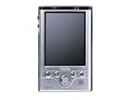'ZDNET Recommends': What exactly does it mean?
ZDNET's recommendations are based on many hours of testing, research, and comparison shopping. We gather data from the best available sources, including vendor and retailer listings as well as other relevant and independent reviews sites. And we pore over customer reviews to find out what matters to real people who already own and use the products and services we’re assessing.
When you click through from our site to a retailer and buy a product or service, we may earn affiliate commissions. This helps support our work, but does not affect what we cover or how, and it does not affect the price you pay. Neither ZDNET nor the author are compensated for these independent reviews. Indeed, we follow strict guidelines that ensure our editorial content is never influenced by advertisers.
ZDNET's editorial team writes on behalf of you, our reader. Our goal is to deliver the most accurate information and the most knowledgeable advice possible in order to help you make smarter buying decisions on tech gear and a wide array of products and services. Our editors thoroughly review and fact-check every article to ensure that our content meets the highest standards. If we have made an error or published misleading information, we will correct or clarify the article. If you see inaccuracies in our content, please report the mistake via this form.
Toshiba Pocket PC e750


Toshiba Pocket PC e750
pros and cons
- Built-in Wi-Fi
- greatly improved screen
- 96MB of built-in storage space
- dual expansion slots.
- Bare-bones software package
- expensive.
- Editors' review
- Specs
One of the few drawbacks of Toshiba's Wi-Fi-enabled e740 was its less than stellar screen. So it comes as no surprise that the company has endowed that model's successor, the e750, with a much-improved display. There's more good news: Toshiba has also thrown in an extra 32MB of storage space and slightly refined the design, making a good handheld even better. If Toshiba had also tossed in a juicy software package to sweeten the pot, the e750 would be irresistible. As it stands, however, the e750 -- which launches in the UK on 7 April -- remains a desirable handheld for power users.
Design
The e750 is a bulky handheld, just like its predecessor, measuring 12.4cm by 7.87cm by 1.52 and weighing 196g. Of course, the device needs the extra space to accommodate its Wi-Fi (802.11b) adapter and dual expansion slots. What's new here is the unit's big, 3.8in. transflective screen. The e750's screen has the same resolution and colour depth of earlier Toshiba handhelds, but it's much brighter and more uniform.
The device has the same button layout as most Pocket PCs, with four function buttons on either side of a five-way directional pad. For a navigation alternative, you can use the thumb scroller on the unit's left side, which is nice. We also appreciate the placement of the e750's microphone and speaker. The mic is at the top of the unit, next to the record button, which makes it easy to talk into, while the speaker sits below the function buttons rather than inside the directional pad, as is the case with HP's iPAQs.
Toshiba put a duo of switches on the bottom of the device. The first, labelled with a wireless icon, activates Wi-Fi connectivity. The second, unmarked switch is a hard-reset switch, so beware. For soft resets, you use the small Reset hole on the device's left side.
The e750 uses the same sturdy cradle and AC adapter that comes with the e740. Like the earlier model, the e750 has an AC jack for recharging the battery without the cradle if you want to travel light. Another plus: the unit's battery is removable, making it easy to replace or swap out if necessary. A leather slipcover protects the device and gives it a bit of '70s-calculator style.
Features
The e750 comes with a 400MHz XScale processor and runs Pocket PC 2002, but the real step up is in its storage capacity. It has the standard 32MB of ROM and 64MB of RAM, but Toshiba tosses in another 32MB of non-volatile flash ROM for extra storage space. If you run out of space there, you can always add more storage in the shape of CompactFlash or SD media.
The biggest benefit of the extra 32MB of ROM is for data backups. In conjunction with the built-in backup program, you can safeguard all or most of your applications and data against hard resets or other types of power loss.
Built-in Wi-Fi is an obvious selling point. With an ever-increasing number of hot spots (wireless access points) popping up in cafes and hotels, the e750 positions itself less as a wireless gadget for the home network and more of a business tool for the corporate traveller.
There's nothing to crow about in the e750's spartan software bundle. The major software is ActiveSync and Outlook 2000, although you can also find a couple of ATI presentation applications and a program that lets you send images wirelessly to a Wi-Fi-enabled projector.
Although we were a little disappointed with the bundle, it's worth noting a couple of small but important Toshiba software enhancements. These include a power-stepping control panel that lets you reduce the CPU speed to 200MHz to lengthen battery life, as well as Home, a program that separates the e750's programs into tabbed categories. The best feature is the one tab that shows all running programs and lets you stop any or all of them quickly.
Performance
The e750 is outfitted with an Intel XScale PXA255 400MHz processor and 64MB of RAM, as well as an extra 32MB of ROM where users can back up their most important data. We ran a test backup and restore, and though the backup took a while, the restore function worked quickly and flawlessly. Toshiba says its new PXA255 processor offers some improvements over the PXA250 chip found in other handhelds, and we saw a little performance difference, especially in launching programs and in scrolling.
The e750's screen is a great improvement over that of the e740. The resolution is still 240 by 320 pixels and it displays the same 65,536 colours, but the newer transflective TFT display is much brighter and more uniform. The screen has no problems in different light levels with the backlight on, and is readable -- if not colour-true -- in sunlight with the backlight off.
Wi-Fi performance is above par. In informal testing, we had the e750 up and running on a wireless network in no time. Web browsing was about the same as with any Wi-Fi-enabled handheld, which means browser pages load slower than you'd expect from a notebook or desktop. However, it was still quick for a handheld. Testing the device with graphics-heavy HTML pages, we noted that the e750 loaded pages about 33 percent faster than HP's Wi-Fi-enabled iPAQ H5450.
Battery life is pretty good as well. Playing MP3s with the backlight at 75 percent, the e750 pumped out tunes for 3 hours and 55 minutes before the battery ran too low to play music. However, there was 14 percent of a charge left in the battery, and the unit still ran for another 45 minutes after the music ended. Don't expect such longevity while your Wi-Fi is on, though.